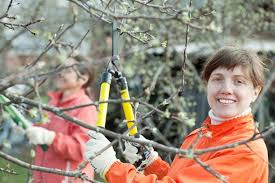Lee Garden Rescue: A Story of Restoration, Community, and Renewal

In every town and city, gardens and green spaces often hold more than just plants, flowers, and trees. They carry the weight of history, culture, and community memory. One such story that has captured the attention of many is Lee Garden Rescue. This phrase does not only refer to the physical act of reviving an overgrown or neglected garden, but it also represents the effort to restore a space back to its original charm, functionality, and significance for the community it serves.
In this post, we’ll explore what Lee Garden Rescue means, why it matters, its historical and cultural significance, the process of restoration, and the lessons it teaches us about care, sustainability, and collective responsibility.
What is Lee Garden Rescue?
At its core, Lee Garden Rescue refers to the initiative of saving and restoring a garden space called “Lee Garden.” Over the years, many gardens named “Lee Garden” exist across different regions—whether private estates, public parks, or community plots. The “rescue” aspect comes into play when these gardens fall into decline due to neglect, lack of funding, urban development pressures, or natural deterioration.
A garden rescue is not just about trimming hedges and planting new flowers; it is about breathing new life into a place. The term has become associated with efforts by local councils, volunteers, landscape designers, and environmentalists who recognize the value of preserving such spaces.
Why Garden Rescues Are Important
Gardens like Lee Garden serve purposes beyond aesthetics. Here are some key reasons why rescues like this matter:
- Historical Preservation
Many gardens are tied to the history of a place. They may have been designed centuries ago or been the setting for community gatherings. Losing them would mean losing a tangible link to the past. - Environmental Value
Green spaces play a crucial role in balancing urban ecosystems. They provide shade, reduce heat, improve air quality, and act as sanctuaries for birds, pollinators, and small wildlife. - Community Wellbeing
Restored gardens become peaceful retreats for people to relax, exercise, and engage in recreational activities. Studies show that exposure to green environments reduces stress and boosts mental health. - Education and Engagement
Gardens also act as living classrooms where children and adults can learn about biodiversity, horticulture, and sustainability practices.
The Decline of Lee Garden
Like many gardens around the world, Lee Garden faced challenges over time. While the details vary depending on its specific location, common themes in garden decline include:
- Neglect due to lack of funding – Many public gardens rely on government budgets or donations. When these dry up, maintenance falls behind.
- Overgrowth – Without consistent care, invasive plants often take over, drowning out native or ornamental species.
- Vandalism and misuse – Abandoned gardens sometimes attract littering or antisocial behavior.
- Urban pressure – Expanding cities may push green spaces to the sidelines, with developers eyeing the land for construction.
The decline of a once-beautiful space like Lee Garden left the community concerned and sparked conversations around whether it could be saved.
The Journey of Rescue
The Lee Garden Rescue initiative brought together multiple stakeholders: environmentalists, volunteers, landscape architects, and local residents. Here’s how the rescue journey unfolded in stages:
1. Assessment
The first step was surveying the condition of Lee Garden. Experts identified overgrown areas, damaged structures, unsafe pathways, and invasive plant species that needed attention.
2. Community Mobilization
No rescue is successful without community involvement. Local residents were invited to participate in planning sessions, fundraising activities, and volunteer clean-up days. This collective ownership ensured that the garden would remain cherished after restoration.
3. Restoration Work
The actual rescue involved multiple tasks:
- Clearing invasive plants
- Restoring flowerbeds and lawns
- Repairing benches, fountains, and pathways
- Installing proper lighting for safety
- Planting native and seasonal species to revive biodiversity
4. Sustainability Measures
A true rescue goes beyond cosmetic fixes. To ensure longevity, the team introduced:
- Rainwater harvesting systems
- Composting stations for organic waste
- Educational boards highlighting plant species and history
- Partnerships with local schools and groups for long-term stewardship
5. Reopening and Rebirth
After months of work, Lee Garden was officially reopened. The transformation was remarkable—not only in terms of appearance but also in its renewed role as a community hub.
Community Impact of the Rescue
The Lee Garden Rescue project had ripple effects that extended beyond its boundaries:
- Revived Civic Pride: Residents felt proud to have a space they could show visitors, attend events in, and enjoy daily.
- Tourism Boost: Restored gardens often attract tourists, which in turn supports local businesses.
- Environmental Gains: Cleaner air, improved soil, and a rise in pollinators improved the area’s ecological health.
- Stronger Social Bonds: Working side by side to restore the garden fostered unity among community members.
Lessons Learned from Lee Garden Rescue
The story of Lee Garden Rescue teaches valuable lessons:
- Collective Action Works
When communities, governments, and experts collaborate, even neglected spaces can be revived. - Sustainability is Key
A one-time cleanup is not enough; sustainable systems must be integrated into the rescue to prevent future decline. - Heritage Must Be Valued
Spaces like Lee Garden often carry cultural and historical stories. Preserving them means passing down heritage to future generations. - Nature Heals
Gardens are not luxuries; they are essential for mental and physical health. Investing in them pays back manifold.
How You Can Support Garden Rescues
If you’re inspired by the Lee Garden Rescue story, there are several ways you can contribute:
- Volunteer: Join local clean-up or planting events.
- Donate: Many garden rescues rely on crowdfunding campaigns.
- Advocate: Speak up when green spaces are threatened by urban development.
- Educate: Encourage children and peers to value and care for nature.
Even small actions like picking up litter or planting a tree can collectively make a massive difference.
The Future of Lee Garden
Looking forward, the future of Lee Garden seems promising. With ongoing stewardship programs, regular community involvement, and eco-friendly practices, it is likely to thrive for years to come. The success of its rescue has even inspired other communities to embark on similar projects, making it a model of how determination can restore lost beauty.
Conclusion
The story of Lee Garden Rescue is not just about saving plants or landscapes—it’s about reviving history, culture, and community spirit. It shows us that even in times when nature seems forgotten, people have the power to step in, nurture it back to life, and ensure its survival for future generations.



















